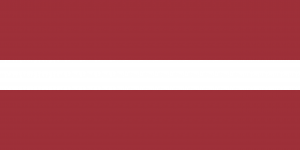Language/Standard-latvian/Grammar/The-verb-"to-be"-and-basic-sentence-structure
The verb "to be" is one of the most fundamental verbs in any language, and it plays a crucial role in sentence structure. In Latvian, the verb "to be" is "būt," and it is used in various grammatical contexts to express existence, identity, and attributes. In this article, we will explore the conjugation of the verb "būt" in Standard Latvian and examine how it is used in basic sentence structure.
Conjugation of the Verb "To Be" (Būt)[edit | edit source]
The verb "būt" is irregular in Latvian, and its conjugation differs from that of regular verbs. Here is the conjugation of "būt" in the present, past, and future tenses:
Present Tense:[edit | edit source]
- Es esmu (I am)
- Tu esi (You are, singular informal)
- Viņš, viņa ir (He, she is)
- Mēs esam (We are)
- Jūs esat (You are, plural or formal)
- Viņi, viņas ir (They are, masculine and feminine)
Past Tense:[edit | edit source]
- Es biju (I was)
- Tu biji (You were, singular informal)
- Viņš, viņa bija (He, she was)
- Mēs bijām (We were)
- Jūs bijāt (You were, plural or formal)
- Viņi, viņas bija (They were, masculine and feminine)
Future Tense:[edit | edit source]
- Es būšu (I will be)
- Tu būsi (You will be, singular informal)
- Viņš, viņa būs (He, she will be)
- Mēs būsim (We will be)
- Jūs būsiet (You will be, plural or formal)
- Viņi, viņas būs (They will be, masculine and feminine)
Basic Sentence Structure with the Verb "To Be"[edit | edit source]
In Latvian, the basic sentence structure with the verb "to be" typically follows the subject-verb-object (SVO) or subject-verb-complement (SVC) order. Here are some examples:
- Existence: The verb "būt" is used to express existence or presence.
- Es esmu šeit. (I am here.)
- Viņš bija mājās. (He was at home.)
- Identity: The verb "būt" is used to express identity or equivalence.
- Viņa ir mana māsa. (She is my sister.)
- Es biju skolotājs. (I was a teacher.)
- Attributes: The verb "būt" is used to describe attributes or characteristics.
- Šis koks ir liels. (This tree is big.)
- Viņas bija laimīgas. (They were happy, feminine.)
- Possession: The verb "būt" can also be used to express possession, often in combination with the dative case.
- Man ir grāmata. (I have a book.)
- Viņiem bija auto. (They had a car.)
Note on Copula Omission[edit | edit source]
In Latvian, the verb "to be" (būt) is often omitted in the present tense when describing attributes or characteristics. This is known as copula
omission. The subject and the predicate (attribute or characteristic) are simply placed next to each other, and the verb "to be" is implied. Here are some examples:
- Zeme apaļa. (The Earth is round.) [The verb "ir" (is) is omitted.]
- Viņa skaista. (She is beautiful.) [The verb "ir" (is) is omitted.]
This omission of the copula is common in the present tense, but it does not occur in the past or future tenses.
Conclusion[edit | edit source]
The verb "to be" ("būt") is a fundamental verb in Latvian grammar and is used to express existence, identity, attributes, and possession. It is irregularly conjugated and has distinct forms for the present, past, and future tenses. Basic sentence structure in Latvian typically follows the subject-verb-object (SVO) or subject-verb-complement (SVC) order, and the verb "to be" plays a central role in forming sentences.
Additionally, Latvian allows for the omission of the copula (the verb "to be") in the present tense when describing attributes or characteristics. This feature of Latvian grammar contributes to the language's flexibility and conciseness.
By understanding the conjugation and usage of the verb "to be" in Latvian, language learners can build a strong foundation for constructing sentences and expressing a wide range of meanings.

